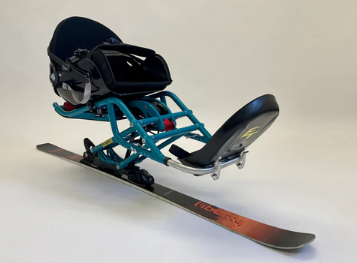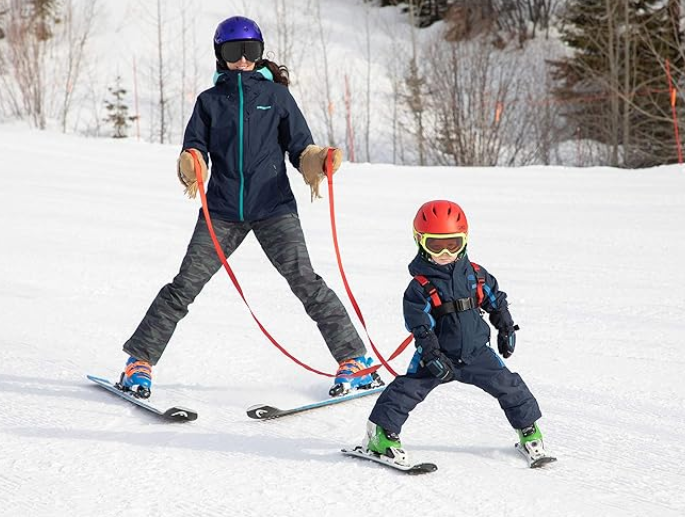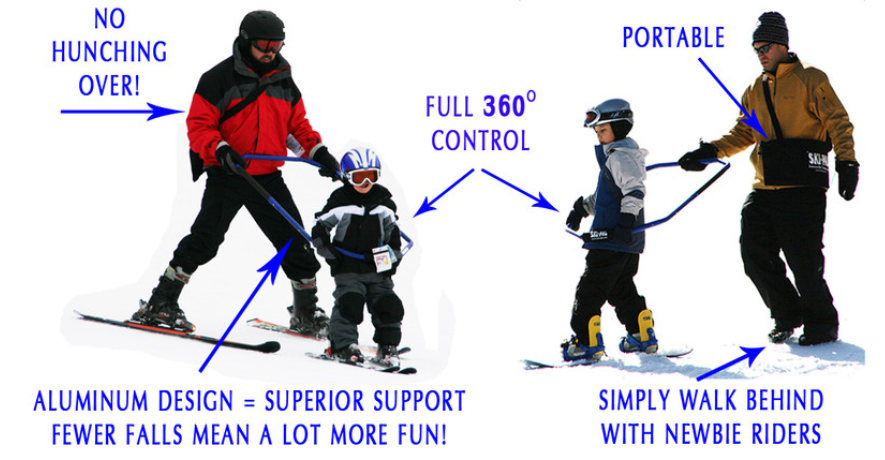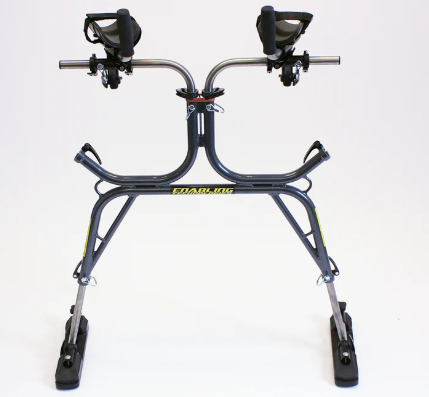
Adaptive Ski Equipment
Adaptive Ski Bike
An adaptive ski bike resembles a bicycle frame mounted on skis instead of wheels. Riders sit on the seat and use small skis attached to their feet for additional balance and control. This equipment is suitable for individuals who may fatigue easily or have mild motor impairments in the lower extremities. It provides a fun and less physically demanding way to navigate the slopes.
Manufacturers: iSkibike
Image from iSkiBike
Mono-Ski
A mono-ski consists of a molded seat (bucket) mounted on a single ski through a shock-absorbing frame. Skiers use handheld outriggers for balance and steering. This setup is ideal for individuals with lower limb disabilities who have good upper body strength and balance, allowing them to ski independently on various terrains.
Manufacturers: Enabling Technologies, Dyn Access ltd, New Halls, HowiRoll Sports, Hands on Concepts, Praschberger, & TESSIER
Image from Enabling Technologies
Bi-Ski
A bi-ski features a seat mounted on two skis connected by an articulating mechanism. Skiers can use handheld or fixed outriggers and may be tethered to an instructor for assistance. This equipment is designed for individuals with more significant balance challenges or those who require a higher level of support, such as individuals with cerebral palsy, multiple sclerosis, or spinal cord injuries.
Manufacturers: Enabling Technologies, Mountain Man, Hands on Concepts, Praschberger, & TESSIER
Image from Enabling Technologies
Outriggers
Outriggers are adaptive ski poles with small skis attached at the base, resembling forearm crutches. They assist with balance, turning, and stopping for both standing and seated skiers. Outriggers are essential for mono-skiers, bi-skiers, and three- or four-track skiers, providing additional support and stability on the slopes.
Manufacturers: Enabling Technologies & HowiRoll Sports
Image from Enabling Technoligies
Tethers
Tethers are straps used by instructors to assist skiers in controlling speed and direction. They are commonly used with bi-skis and other equipment when the skier requires guidance or cannot ski independently. Tethering ensures safety and provides the skier with the confidence to navigate various terrains.
Manufacturers: Enabling Technologies & Amazon
Image from Amazon
Support Hula Hoop/Bamboo Pole
In adaptive skiing, a hula hoop or a bamboo pole can be used as a teaching tool. The instructor and skier both hold onto the hoop or pole, allowing the instructor to guide the skier's movements, provide support, and help with balance. This method is particularly useful for beginners or individuals with coordination challenges. One variation of a hula hoop is the Ski-Pal which can be used in various positions for support.
Manufacturers: Ski-Pal & Amazon
Image from Ski-Pal
Ski Tip Connector
A ski tip connector is a small flexible device (like a bungee cord or rubber band) that holds the tips of skis together. It encourages a wedge or "pizza" position which helps learners initiate and control turns. This is ideal for young children, individuals with developmental delays, or those working on snowplow techniques.
Manufacturers: Edgie Wedgie, Lucky Bums, SkiTipConnector.com
Image from Amazon
Snow Slider
A snow slider, also known as a ski slider or 4-track slider, is a walker-style frame mounted on skis designed to support skiers who can stand but need assistance with balance and coordination. It enables individuals to ski upright with the stability of a frame they can hold onto. The slider can be used alone or in combination with outriggers, depending on the skier’s needs. It is commonly used by individuals with cerebral palsy, spina bifida, traumatic brain injury, or other conditions affecting motor control. Instructors often use tethers or remain nearby to ensure safety and assist with direction and speed control.
Manufacturers: Enabling Technologies, Tessier, DynAccess, Hands on Concepts
Image from Enabling Technologies







